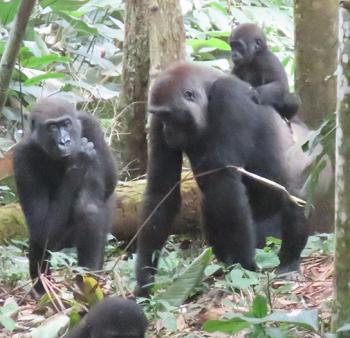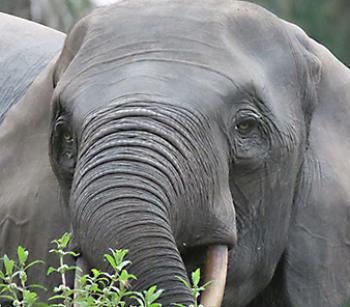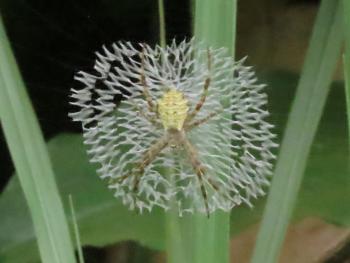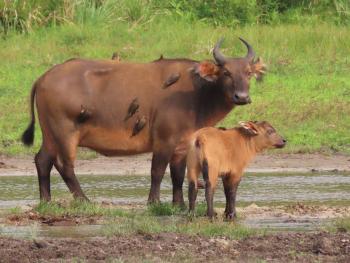Gorilla tracking at its best
This item appears on page 13 of the June 2021 issue.
I arrived in Brazzaville, capital of the Republic of the Congo, on July 4, 2019, after nearly two days in airplanes and airports. A few hours later, I was one of six passengers in a small turboprop airplane headed to the airstrip at Mboko Camp, one of three safari camps near Odzala-Kokoua National Park: Mboko, Lango and Ngaga.
From the airstrip, I was taken to Ngaga Camp, a drive of about three or four hours, depending on what you encounter along the way.
Through Go2Africa (Cape Town, South Africa; in US, 866/438-8677, go2africa.com), I had booked the “Odzala Discovery” tour* offered by Odzala Discovery Camps, with three nights at Ngaga, two nights at Lango and two nights at Mboko.
The trip was somewhat expensive — $10,000 for internal transportation, accommodations, meals and drinks (even beer, wine and hard liquor). Same-day laundry service was included as well, which was very convenient.
Operated by Odzala Discovery Camps (odzala.com), all three of the safari camps had spacious, comfortable guest houses. The camps were small — six guest houses each at Ngaga and Lango and 12 at Mboko — so excursions were never crowded. Everything ran like clockwork, and the food was excellent at all three lodges.
The tour included two days in Ngaga for gorilla tracking, where we were almost guaranteed to see western lowland gorillas both days. There were two gorilla troops near Ngaga, and each troop was followed by a tracker daily until the evening. The next morning, it could take the tracker some time to find them. The number of guests allowed to visit a band of gorillas was six plus a guide and the tracker.
Our wakeup time was 5 a.m., so we were ready to head for the gorillas at sunup by 6. I was lucky to be assigned to a gorilla troop that was close to the camp; it took us not quite 45 minutes to find them. The second group had to walk for almost three hours to reach the gorillas!
Once our group of visitors reached a gorilla troop, we were allowed to hang around with the animals for one hour. The guide and tracker kept guests at least 7 meters from the animals, and anyone who was close to them had to wear a face mask, since gorillas are susceptible to human diseases. The gorillas were habituated to people, so they pretty much ignored us.
On our way to see the gorillas, I was concerned with how much we’d be able to see. The Marantaceae vegetation was extremely dense, and you couldn’t see more than about 6 feet in front of you. Fortunately, the tracker had cleared an area of vegetation around a fruiting junglesop tree (Anonidium mannii), the fruit of which, the bobo, gorillas love, so they stayed around there, and we had a clear view of them for our whole visit.
The next day we did another gorilla-tracking excursion, to the other habituated troop. Fortunately, we needed only 45 minutes to find them. This time, the dominant male silverback showed up. It was exciting to watch them all play and interact.
In the evening, we did a drive to see nocturnal animals, spotting bushbabies, civets and unusual insects and spiders.
After the third night at Ngaga, we transferred to Lango Camp. To get there, we drove to Mboko Camp, stopping by a village along the way, Mbomo, to visit a market.
From Mboko Camp, we took kayaks downriver toward Lango. When the water got too shallow, we walked through the river and deep mud for another hour to the camp. I had taken off the lower legs of my cargo pants so they wouldn’t get wet. BIG mistake! The sand flies were bad, and I ended up with more than 50 bites on my calves.
At Lango Camp, a blind had been set up for bird-watching, which I used both mornings. I was looking forward to seeing flocks of African grey parrots and green pigeons landing on the mineral-rich mudflat but only once saw a flock of parrots in the area, across a brook.
Those who were interested could take a morning walk around the camp area to see monkeys, elephants, buffaloes and antelope. On our way back to camp after sundowners, we encountered a herd of elephants in the road.
The main excursions at Mboko Camp were done by boat. We had two longboat tours and saw several birds, but the main attractions were the elephants. We had a great time watching groups of them along the river.
The next day, the boat excursion I was heading to was called off when it started raining. One group already on a walking excursion got quite wet in the thunderstorm.
After the second night at Mboko Camp, I flew back to Brazzaville for a night, taking a tour of the city the next day, which was interesting. I felt safe in Brazzaville (as well as in Odzala-Kokoua National Park, earlier). I flew out for home the next morning, July 12, again a trip of nearly two days.
Except for during the brief visit in Mbomo, I didn’t see much of local people during the tour.
This tour was all about wildlife. The highlight was visiting the western lowland gorillas, which seemed much more active than the mountain gorillas I had seen in Uganda and Rwanda. They moved around more, playing among the trees, and seemed more interactive with each other. Because of that extra activity, I enjoyed watching the lowland gorillas much more than the mountain gorillas and highly recommend seeing them.
GÜNTHER EICHHORN
Scottsdale, AZ
*Go2Africa offers one tour to the Republic of the Congo during which guests visit all three Odzala Discovery Camps (Mboko, Ngaga and Lango). However, to protect gorillas from COVID-19, the national parks in the Congo Basin are currently closed. Odzala Discovery Camps are scheduled to reopen on Sept. 2, 2021.




